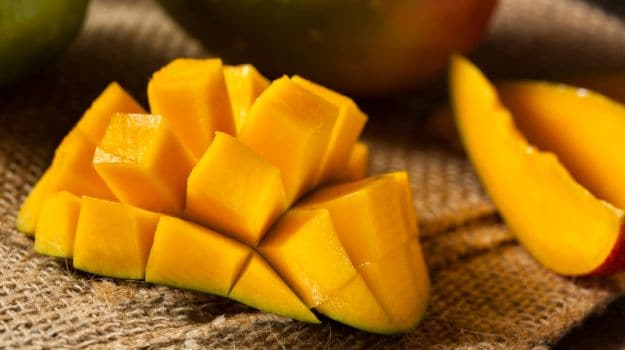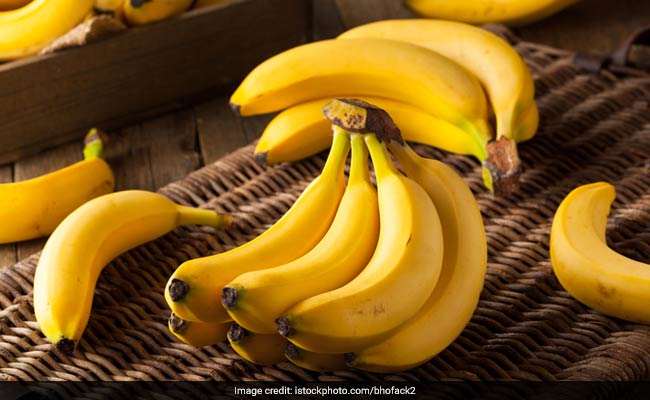World Diabetes Day 2018: You must have pondered over the fact if mangoes and bananas are suitable for diabetic people or not. Here's your answer straight from Dr Sujeet Jha.

World Diabetes Day: Are mangoes and bananas safe for diabetic people?
HIGHLIGHTS
- Eating mangos if you have diabetes is not bad as you think
- It can even prevent diabetes for those persons who are prone to it
- Fiber consumption also protects against diabetes mellitus
Can you eat mangoes if you have Diabetes? Glycemic index (GI) of food rather than how sweet is the fruit is more important.
Eating mangoes if you have diabetes is not bad as you think. It's exactly opposite than most of us think about sweet summer fruit mangoes. It has been shown in Australian studies that it can even prevent diabetes for those persons who are prone to have diabetes. World Health Organization recommends that we all should get approximately 55% calories starchy food (carbohydrates) and rest from protein (20% and fat 25%). Carbohydrates should be derived predominantly from foods rich in complex carbohydrates including grains, especially whole grains, fruits, and vegetables which has high glycemic index. It should contain at least 400g of fruits and vegetables per day which has low glycemic index.
Also read our expert advice: Our Expert Decodes The Current Diet Myths About Diabetes In Social Media
Glycemic index is a measurement of how much sugar (glucose) is absorbed into the blood in a fixed time period, after eating a portion of the food with a fixed quantity of carbohydrate. Glycemic index of food is more relevant if we have Diabetes, the glycemic index of the food can be high or Quick (60 or more), Medium (59 to 40), Slow 39 to 20) and Very Slow (lower than 19). Lower the glycemic index of carbohydrates less will be the rise of sugar after meal in patients with diabetes.

It is the fiber content of the fruits and vegetables which determines the glycemic index of it rather than just how sweet it is
Photo Credit: iStock
There is a myth in our society person with diabetes should not eat sweet fruit like mango, grapes, cherry but they can eat digestive biscuits. The standard rule of 5 fruits a day is true for patients with Diabetes as well. Mangoes has similar glycemic index (58) than most of the biscuits or corn flakes which has one high glycemic index of 82. If any patients need to snack between the meals they should eat fruits rather than biscuits for similar reasons. There will be a rise of blood sugar after any carbohydrates, but the rise will be less with fruits. It is true that papaya has excellent Glycemic index but most of the other fruits has glycaemic index lower than 60. For e.g. cherry has GI as low 22 and grapes just 45. Though grapes and cherries are sweet fruits, but they should be taken along with our meals which is god for Diabetes. The best example is of sweet potato has much glycemic index of 54 compared with glycemic potato 62.
Also read our expert advice: Will Diabetes affect my eyes?
It is the fiber content of the fruits and vegetables which determines the glycemic index of it rather than just how sweet is the fruit and that delay the rise of sugar. It is also very important to note that we should not just be guided by food with low glycemic index as some of them have high fat content as well like potato crisps, chocolate. Eating small amount of GI food like water melon may not have large effect on blood glucose levels. Fruit should be counted as part of the carbohydrates and for e.g. if you want to have a mango after dinner than eat one less roti from your meal and this hold true for Diabetics.
Cooking food for longer time will increase the glycemic index of food as it's converted into more digestible forms and quicker the e rise of blood sugar in blood. Fish and Meat however lack fiber, so when eaten as part of a meal have some effect lowering the GI of any meal. High fiber salad and green vegetable lowers the GI of food significantly so all of our meals should contain this. Similarly sweet potato has just 54 glycemic index were as potato has 62.
Also read: Yes, Diabetes Can Affect Your Sex Life. Make It Stop Now
A low GI diet may help to loose weight compared to higher GI but total number of calories need to reduced to lose weight. Athletes use the GI tables too. Using the tables to choose foods that give a slower but sustained release of energy for long term endurance sports. This sustained release helps them maintains their blood sugar levels during prolonged exercise. Compared with meals made from foods with a quick conversion to blood sugar. Meals made up from foods that are medium to slow rated give a slower but more sustained conversion to blood sugar.
Fiber consumption also protects against diabetes mellitus. Soluble fiber, such as that contained in vegetables, fruit (including mangoes and apples), and especially legumes, slows the postprandial rise in blood glucose and may improve glycemic control in patients with diabetes. By comparison, insoluble fiber, such as that found in whole-wheat bread and brown rice, has a major impact upon gastrointestinal transit time and fecal bulk, but leads to very little alteration in the rate of rise of the blood glucose. High fiber intake is associated with a 40 to 50 percent reduction in the risk of CHD and stroke compared with low intake.
Intake of up to 5 servings per day appears to provide the most benefit. Cruciferous vegetables (i.e., broccoli, cabbage, cauliflower, and Brussels sprouts), green leafy vegetables, citrus fruits, and vitamin C-rich fruit and vegetables may lower the risk of cardiovascular disease to the greatest extent.
This also helps to reduce the risk of developing certain kinds of cancer (including lung cancer and cancer of the gastrointestinal system). As an example, it is estimated that for every additional serving of fruit and vegetables per day there is a 5 percent reduction in the risk of lung cancer .
Australian Health and Medical Research Congress recently shown that in some mango components act on the same pathways that diabetes and cholesterol drugs target. One of the compounds that are being focused on by the researchers is quercetin, a chemical that is also found in onions, while another is norathyriol, a by-product of mangiferin that is found in a range of fruits and traditional antidiabetic herbs. Australian researchers suggest that compounds isolated from mangoes may be helpful in protecting the body against metabolic disorders like diabetes and high cholesterol. We all should enjoy mangoes and all summer fruits along with our meal but these needs to consideration that our calories intake needs to be balanced. Eating sweet fruits like cherry mangoes grapes should be eaten rather it can be taken as glycemic index of these foods are not very high. These recommendations are standard from Amercan, Australian, UK and other Diabetes association including World health Organization.
(Dr. Sujeet Jha is the Director of Institute of Endocrinology, Diabetes & Metabolism at Max Healthcare)
Disclaimer: This content including advice provides generic information only. It is in no way a substitute for qualified medical opinion. Always consult a specialist or your own doctor for more information. NDTV does not claim responsibility for this information.
DoctorNDTV is the one stop site for all your health needs providing the most credible health information, health news and tips with expert advice on healthy living, diet plans, informative videos etc. You can get the most relevant and accurate info you need about health problems like diabetes, cancer, pregnancy, HIV and AIDS, weight loss and many other lifestyle diseases. We have a panel of over 350 experts who help us develop content by giving their valuable inputs and bringing to us the latest in the world of healthcare.














